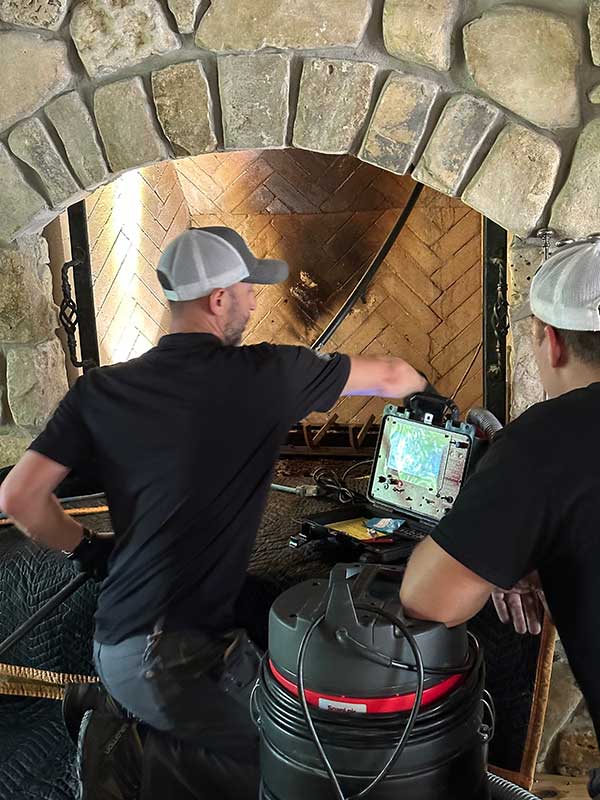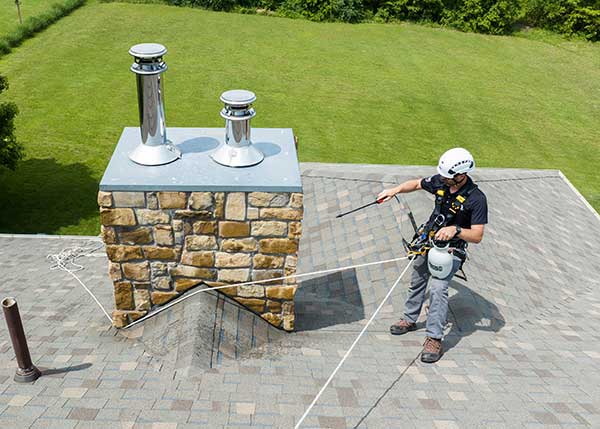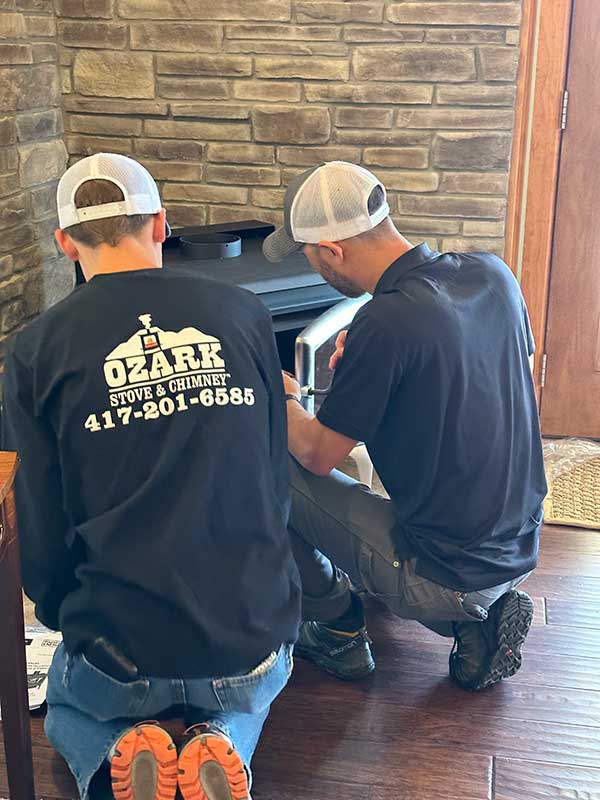Ozark Stove & Chimney Is Here for Fireplace Owners In & Near Rogers, AR
Are you living in Rogers or somewhere in the surrounding area? Then, you know firsthand how great this city is. We’re always happy to meet customers here and see how we can help with their heating needs!
What does the area have to offer? Well, there is a long list of parks throughout town, like Centennial Park, Cambridge Park, and Horsebarn Park, as well as many trails and greenways to enjoy. And the outdoor fun doesn’t stop there. Locals and guests can also visit spots like Beaver Lake, War Eagle Cavern, Beaver Lake Outdoor Center, and many more.
Not the outdoorsy type? No worries. There are tons of great shops to visit and dining options to try out. Or, if it’s pouring buckets or snowing nonstop, just stay at home! We happily serve this area, as well as many surrounding cities, such as Lowell, Cave Springs, Prairie Creek, Osage Mills, and more. We’d be happy to set you up with a cozy, comfortable, and safe-for-use fireplace or stove to enjoy when you’re cooped up inside. Call or reach out online today.
-Nick S
★★★★★
-Patti M
★★★★★
Our Services: Book Your Inspection Today
What do you need? Whether it’s a new chimney cap, a crown rebuild, a masonry repair, or something else, we’re certain we can help. We do always suggest starting with a sweep and inspection, after which, we’re equipped to offer any of the following:
- Leaky Chimney Repairs
- Chimney Waterproofing
- Chimney Cap Installation
- Chase Cover Installation
- Flashing Installation & Repairs
- Chimney Relining & Resurfacing
- HeatShield® Liner Repairs
- Masonry Repairs
- Chimney Crown Repairs
- Stucco Repairs
- PriorFire Installation
- Dryer Vent Cleaning
As you can see, there isn’t much we can’t tackle, so avoid the hassle of calling multiple companies and make us your one-stop shop for it all. We’re certain that once you start working with us, you won’t want to rely on anyone else ever again.

Why Is Leak Prevention So Important for Chimneys?
Many of our services and any new parts that can be installed usually, in one way or another, help to prevent one of the biggest issues that chimney systems tend to face – water intrusion. Your brickwork is porous, so when water is directly exposed to it, it can break down over time. This is especially true during cooler months, when the freeze/thaw process occurs.
In addition, water can trigger rust throughout your system’s components, as well as cause home damage, like staining on your walls or rotting throughout your woodwork. And don’t even get us started on the potential for mold growth.
In the end, one of the best ways to keep your chimney in tip-top shape for the long haul is to invest in leak prevention services, like waterproofing, chimney cap installation, crown repairs, or chase cover installation.
Want to learn more about water prevention and protecting your chimney? Not sure what exactly your system is in need of? Reach out to us online through our website or give us a call at 417-201-6585. The team here at Ozark Stove & Chimney would be happy to walk you through your options, so that you can enjoy your system fully without worrying about water damage and the stress it brings.
To sum up… whatever you need, our team is here to help.

What’s the Difference Between Chimney Crowns, Chimney Caps & Chase Covers?
For as much as we care about our fireplace and chimney system on the inside (by operating it according to manufacturer instructions and getting it inspected and swept regularly), it’s equally important to understand all the components on the outside. These are the things that protect the system from outdoor dangers and weathering, contribute to its overall efficiency, and keep harmful water and moisture out for good.
Cue crowns, caps, and chase covers.
These three components play a huge role in keeping your system safer, but they often get confused or shoved together. Some believe a cap and cover are the same thing, some assume you need all three (not true), while others think all they need is a reliable crown to keep water out (also not true).
In the end, it’s important to understand what these various components are, what they do, and how they work, so you know what to look for in terms of potential damages and threats – and what you need for your system to function well for the long haul.
What is a chimney crown?
Typically made of a concrete or cement mixture, the chimney crown sits atop the opening of your chimney chase (excluding the flue where the smoke is released). The crown is usually built with a slight mound in the middle that slopes down to the edges to encourage water runoff. When built correctly, the chimney crown is resistant to water and hangs just over the edge of the chimney to ensure no water leaks inside.
Why do I need a chimney cap?
Similar to the chimney crown that covers the opening of the chimney chase, the chimney cap is meant to seal off the opening to the flue, white still providing it adequate ventilation. Without a chimney cap, there would be a direct connection between your fireplace and the outside world. This means that not only will rain fall and collect inside your chimney, but leaves, twigs, and other debris, as well as animals looking for shelter, all have open, easy access.
How does a chase cover work?
A lid-like structure that is designed to fit over the chimney chase (whether paneled in wood as in a prefab system or traditional masonry), a chimney chase cover also allows the flue to vent properly. Because of their full coverage design, many homeowners choose to invest in a chimney chase cover to ensure that their system is properly protected against all levels of intrusion. Plus, because they chase covers are typically made of stainless steel, they are quite durable and require minimal maintenance after they are installed.
So, while similar, you can see that a chimney chase cover, a chimney crown, and a chimney cap are not, in fact, all the same thing. Each has a function that is distinctly unique, but also still contributes to the overall goal of protecting the integrity of your chimney system, and, by proxy, your home.
What Systems Does Ozark Stove and Chimney Sell & Install?
One thing we pride ourselves on selling is high-quality wood stoves, gas inserts, gas logs, and Central Boiler outdoor furnaces.
But before you decide which is best for you and your household’s needs, narrowing down which fuel you’d like is a good first step. Both gas and wood are great options, but they each have distinct advantages (and disadvantages), which could make one or the other more appealing to you.
Wood or Gas Fuel: Which Is Better?
When it comes to choosing the method of heating your home, there are a lot of factors to consider: ease, availability, cost, efficiency, and more. Like anything else, there are benefits and drawbacks to heating with any fuel source and our job as home heating professionals is to arm you with as much knowledge as we can, so you can make the most informed decision.
Gas as Fuel: Pros and Cons
Pros:
- Efficiency. Unlike its wood-burning counterpart, gas fireplaces are infinitely more efficient. With knobs and dials, you have the ability to adjust the heat settings that control how much heat your system is producing and how far it reaches. On average, gas fireplaces tend to be 60-90% more efficient than those that are wood-fueled.
- Low maintenance. In order to enjoy the cozy glow of a nice home fire, all you have to do is flip a switch, press a button, or turn a dial. Maximum warmth and comfort all in the snap of a finger.
- Mess-free. There is no need to haul wood in from outside and risk bringing dirt, bugs, leaves, and any other contaminants in with you. Everything is well-contained and all in one place. Plus, there is less soot and smoke production since you’re not burning wood.
- Safety. With gas appliances, there are more safety features, like the ability to quickly shut off the gas connection, which can come in really handy, especially if you have curious little ones.
- Flexibility. Depending on what type of gas appliance you’re looking for, you have a significant amount of options to choose from in terms of both style and location.
Cons:
- Less authentic. While gas appliances do come close, they can never fully replicate the magical ambiance created by a wood-fueled fire. There is just something special about the smell and the crackling sounds or burning real wood.
- Dependence on gas supply. With a wood system, you’re never really at a shortage for fuel, as long as you have easy access to a wood supply. A gas system depends on gas so if there is ever an issue with fuel connection, it could affect your ability to heat your home.
- Environmental impact. Even though natural gas and propane are both cleaner burning, they are both still fossil fuels and thus ultimately harmful to the environment.
Wood as Fuel: Pros and Cons
Pros:
- Sustainability. Wood may create harmful byproducts when it is burned, but unlike gas, it is a renewable resource. Plus, when harvested responsibly, removing dead trees from the forest actually helps to create new life.
- Ambiance. There is nothing quite like cuddling under a blanket in front of a wood-fueled fire on a cold night. Some alternatives have come close, but nothing will ever fully replicate the real thing.
- Independence/freedom. If you are responsible for sourcing your own fuel, you needn’t worry about relying on other companies if there is a fuel shortage or a cut off to your supply. It’s all up to you to maintain your wood supply.
- Cost effective. Speaking of independence, it’s important to mention the financial freedom that comes with wood as fuel as well. Generally speaking, obtaining burnable wood is actually quite affordable – especially if you cut it and season it yourself!

Cons:
- High maintenance. If the thought of chopping (or otherwise acquiring) wood in order to heat your home sounds exhausting, investing in a traditional wood-burning fireplace is probably not the best choice. It takes a lot of work to operate and maintain these systems.
- Imbalanced heat distribution. Fireplaces fueled by wood tend to lose a vast majority of their produced heat to the chimney simply because of the way the system is designed. This means they won’t produce a widespread heat that can be felt throughout your home.
- Smoke production/impact on air quality. Because wood does not burn cleanly, wood-fueled appliances are generally not the best option if someone in your household experiences respiratory problems.
Still not sure which fuel type is the right one for your home? Schedule an appointment with one of our incredible technicians here at Ozark Stove and Chimney. We’d be happy to discuss all your options and see what might be the most suitable for your lifestyle. Book online or by calling 401-217-6585.
Call Us Out to Help With Your Next Chimney or Fireplace Service
For top-quality, high-level care, there’s only one company in Southwest Missouri and Northwest Arkansas to turn to – that’s us. Don’t settle for a team that won’t hear you out, answer your questions, or listen to your needs and wishes. On top of putting you first and taking time to personalize your services, we also have the tools, knowledge, and training to get the job done right.
Call today or book your next spot online now.
We are proud that the area we serve includes the friendly residents of Bella Vista, AR.
